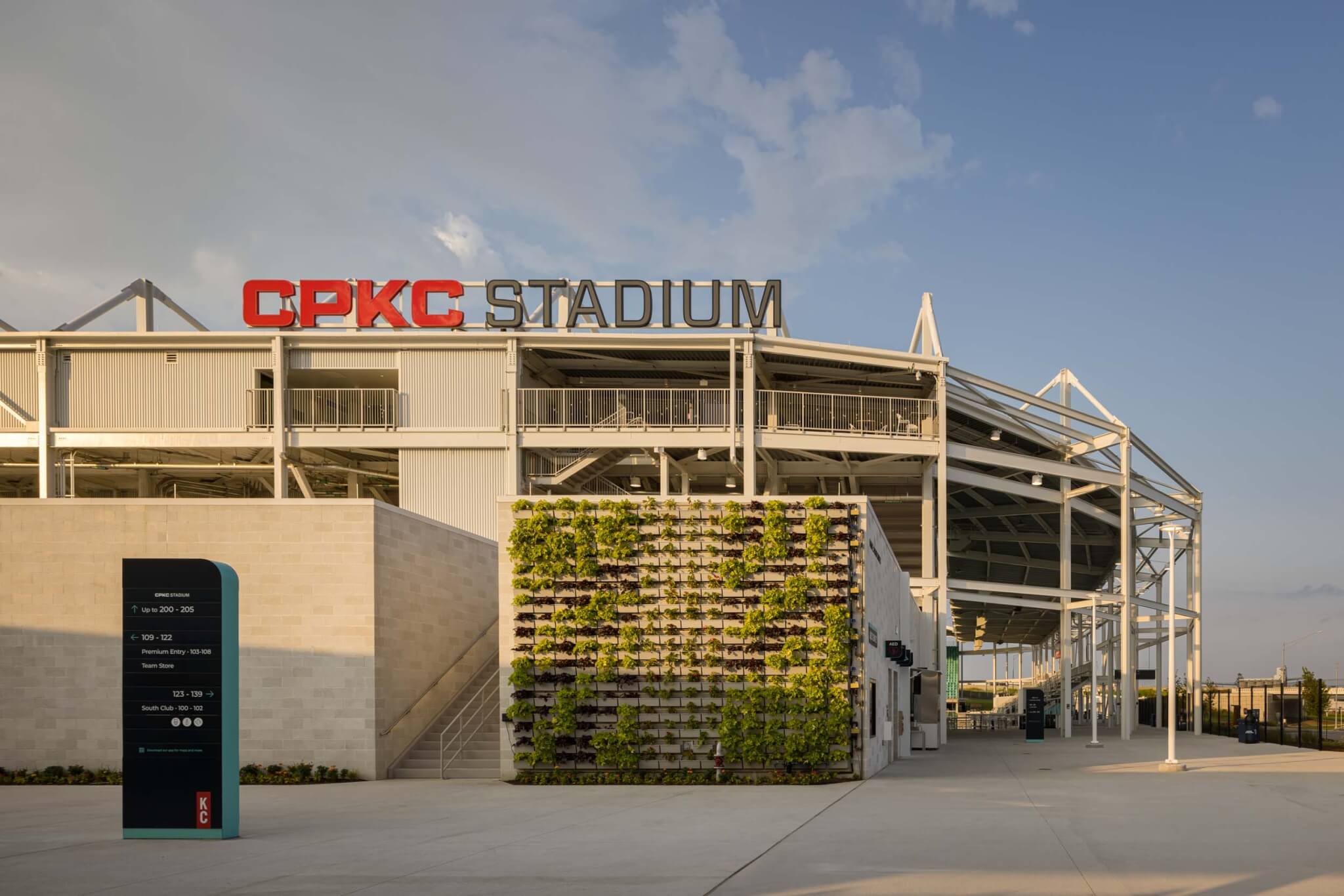Kansas City Current isn’t just the first professional women’s soccer team to have its own purpose-built stadium, it’s one of the first women teams of any sport, period, to have its own home pitch. Situated on the banks of the Missouri River with views of the city skyline, CPKC Stadium, by local practice Generator Studio, may seem ordinary as far as stadiums go—it’s got bleachers, concession stands, and an open roof—but it’s anything but quotidian in its mission and execution.
For the team’s owners Chris and Angie Long and Kansas City, a bonafide sports capital, CPKC Stadium was an opportunity to make waves, literally. The shape of the soccer venue’s rounded roof was modeled after wave currents, a clear reference to the team name, and the nearby Missouri River.

The stadium was designed to reflect the future of female athletes and women’s sports in general. Interest and viewership of female sports, namely basketball and soccer, has risen in recent years, however, according to a survey by Nielsen, 22 percent of the U.S. population think women’s sports aren’t highlighted enough in the media.
Historically women sports teams share facilities with male counterparts. For the Current’s owners a purpose-built stadium, rather than a shared facility, means more revenue and therefore more investment in the team itself.

“I think a lot of people looked at this stadium and wondered, we have an MLS stadium, why can’t they just continue to play there? Why build another facility?,” Christina Franklin, director of interior design at Generator Studio, told AN. “And the reality is it just makes financial sense. It also shows the Longs’ and secondary owners’ of the team’s commitment to the sport and their commitment to their players.”
A Sense of Place
CPKC Stadium is situated on a “compact” site. Its location perfectly orients it so fans have a view of the Kansas City skyline and Missouri River. Franklin said there is always “a sense of place no matter where you are within the stadium.”
This sentiment was achieved in the vignettes framing city views and also in the interior design choices. Franklin added her team brought in a number of decorative art deco elements that recall many of Kansas City’s oldest buildings. These odes to Kansas City’s architectural past include gilded materials and geometric forms. For instance, fluted bar counters and sleek light fixtures.
“You couldn’t just pick it up and put it anywhere, it felt like we were getting touches and nods back to our architectural history here within Kansas City itself,” Franklin shared.

In addition to its urban environs, the architecture of CPKC Stadium was also informed by the game experience with the most defining element being its swooping, wave-like roof. Where the roof’s highest point curves downward, seating for the Supporter’s section was placed.
By conceiving the venue in this way, the cheers and chants from the rowdiest and largest section of fans is amplified. Each of the 11,500 seats in the stadium is no more than 95 feet away from the field.

The Future of Women Sports
Generator Studio designed CPKC Stadium to be flexible. In the future, the stadium’s capacity can be expanded. In the meantime, it accommodates other spectator sports, among these lacrosse and rugby games. When not being used to host soccer games, the building acts as a venue for hosting art and culture fairs and weekly markets. Soon a public transit stop will be located in front of the stadium.

No large architectural gestures had to be made to make the stadium solely for women. Rather, small additions, like a mural quoting Title IX that the players touch before taking the field and a weight room with equipment branded with the KC Current name, show the importance and magnitude of women’s sports, and equality in general. The KC Current team is actively recruiting new players and repeatedly hears the team’s ownership of its own stadium is a large selling point for attracting athletes.
Franklin said, “We always went into this project knowing that it might be the first, but it won’t be the last.”

